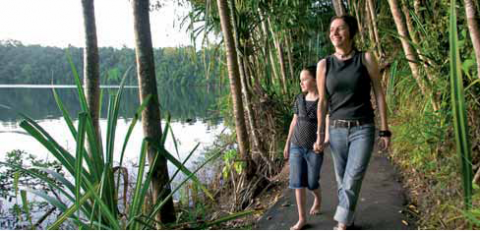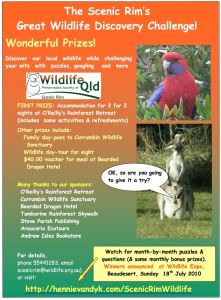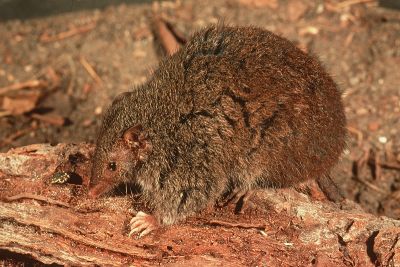
Logan and Albert Conservation Association

 Free community festival in Logan City
Free community festival in Logan City
to celebrate World Environment Day and
2010 INTERNATIONAL YEAR OF BIODIVERSITY
Wildlife shows, exhibits, music, demonstrations and hands-on workshops, organic food markets, activities for kids, giveaways, eco fashion, speakers, presentations, electric cars, Daisy Hill Koala Sanctuary, speakers, eco fashions and much more. http://www.logan.qld.gov.au/leaf/
Building a child friendly Logan - Saving our children from Nature Deficit Disorder at 3.15 pm by Geoffrey Woolcock will be an eye-opener and maybe a mind opening experience for those who attend. Amid all the rush to build new master planned satellite cities in our so called greenfield areas, will the developers and our governments take this aspect into consideration?
Entry form at bottom of page.
All entrants must read and agree to the following Terms and Conditions before entering the Photography Competition 2010
To enter the competition, choose your entry form below to enter online: click on age group
Once the entry form has been submitted, please pay the Entry fee by Electronic Funds Transfer
| Bank Details | |
BSB: | 704 640 Qld Country Credit Union Ltd |
Account: | 2265525 |
Account name: | Logan and Albert Conservation Association Inc |
Reference: | your email address |
All photography must be the work of the photographer.
Family pets, zoo animals and farm animals are not acceptable subjects.
There is no limit to the number of entries submitted, but a separate entry form must be submitted for each 4 photos.
Entry fee is $5.00 per photo, with the fourth photo free.
Entrants in the 12 years and under section enter for free.
Appropriate entry fees must be paid for entries to be accepted. Fees are to be paid by Direct Deposit.
All entries have to be received by midnight 10 July 2010.
Winning photos will be professsionally printed and mounted and put on display at the Scenic Rim Wildlife Expo in Beaudesert 18 July 2010.
Open winners will receive $190 worth of professional digital processing from PicsOn DVD.
Junior winners will receive 12 month subscription to Wildlife Australia magazine from Wildlife Queensland.
All photos are to be submitted via Flickr.com.
If you do not have a Flickr account you will need to set up your own account. (Flickr accounts are free to set up)
Once photos have been uploaded to your account, they must be tagged with "lacaphotocompetition2010".
Please ensure also that the photo title matches the title used on the entry form.
From your Flickr home page, click Groups from the top menu. In the box labelled Find a Group, type in LACA.
This should find the group called Nature photography of Scenic Rim 2010 competition. Join this group.
Once you have accepted the Group rules, you are able to upload your Competition Photos.
Photos must be at least 1000 pixels on their longest side and 300 dpi resolution.
CHECK BACK HERE FOR ONLINE ENTRY FORMS - COMING THIS WEEKEND!
All Queenslanders are invited to have their say on the Queensland Government’s Draft Queensland Greenspace Strategy.
The draft strategy contains proposed planning actions for securing 50% more land for public recreation by 2020.
DIP would like you to tell government infrastructure how you think these draft actions should be prioritised and whether there are any additional actions that should be considered.
For more information, go to www.dip.qld.gov.au/greenspace
Submissions can be made by completing the online submission form and sending your response via:
Email: This email address is being protected from spambots. You need JavaScript enabled to view it.
Responses must: be made by 5pm on Friday 7 May 2010
include the name and address of the respondent and be a structured response under the headings of the supplied submission form.
 Today marks forty years since the commencement of Earth Day. Before you just dismiss it as another day, take a moment to reflect on all those people who are devoted to making a difference and what each of us can do in our daily lives to help our shared home on planet earth.
Today marks forty years since the commencement of Earth Day. Before you just dismiss it as another day, take a moment to reflect on all those people who are devoted to making a difference and what each of us can do in our daily lives to help our shared home on planet earth.
Forty years after the first Earth Day, the world is in greater peril than ever. While climate change is the greatest challenge of our time, it also presents the greatest opportunity – an unprecedented opportunity to build a healthy, prosperous, clean energy economy now and for the future. Earth Day 2010 can be a turning point to advance climate policy, energy efficiency, renewable energy and green jobs.
Earth Day Network is galvanizing millions who make personal commitments to sustainability.
Earth Day 2010 each 22 April is a pivotal opportunity for individuals, corporations and governments to join together and create a global green economy. Join the more than one billion people in 190 countries that are taking action for Earth Day.
The Scenic Rim's
 Over the next few months Wildlife Scenic Rim (branch of WPSQ) is presenting a series of puzzles and quizzes. Then at the Wildlife Expo in Beaudesert on Sunday 18th July the winners will be announced for the final prizes:
Over the next few months Wildlife Scenic Rim (branch of WPSQ) is presenting a series of puzzles and quizzes. Then at the Wildlife Expo in Beaudesert on Sunday 18th July the winners will be announced for the final prizes:
First prize:
Accommodation for two for two nights at O'Reilly's Rainforest Retreat, including refreshments and guided walks.
Other prizes:
Family pass for Tamborine Rainforest Skywalk, family pass for Currumbin Wildlife Sanctuary,
Wildlife Day-tour with Araucaria Ecotours,
Meal voucher for Bearded Dragon Hotel, various nature books.
The Challenge will help you to learn a lot about our local wildlife while offering you some wonderful opportunities for enjoying it.
If you'd like to help promote this by displaying the flyer, download the picture on the left as a pdf file
Why bother to report wildlife sightings? 
In South East Queensland especially there has been - and continues to be - a huge influx of people.
Australia's wildlife is threatened by many natural changes. These usually take place over long periods of time. However actions of humans can have a more sudden effect on wildlife and lead to extinctions if continued. These threatening actions include:
Habitat destruction and change
Clearing of an animal's natural ‘home' - its habitat - is the greatest threat to its survival. Habitats can also be changed by fire, stock, soil compacting, road widening and dam building.
VAST satellite cities could be built between Brisbane and the Gold Coast to ease the crippling population pressures threatening southeast Queensland, according to Logan Mayor Pam Parker. Speaking on the Gold Coast at The Courier-Mail's Our Future Your Say forum, Cr Parker said the areas around Logan and Ipswich, which still held large tracts of greenfill land otherwise rare in the southeast corner, would be perfect for taking the strain off the major cities to the north and south which are already battling housing affordability and land availability problems.
"These areas (Logan and Ipswich) have vast greenfill space which could house satellite cities where people could live, work and play," she said.
"This would help to ease the gridlocked traffic on our freeways and pressures on our existing infrastructure." You can hear Mayor Parker's speech online at http://www.couriermail.com.au/news/queensland/push-for-satellite-cities-to-ease-population-pressure/story-e6freoof-1225836732561
She said Logan and Ipswich – often been viewed as poor cousins of the Gold Coast and Brisbane – would appeal to new arrivals wanting the best of both worlds without having to shell out the higher costs for housing in both centres.
She also said Logan would be able to offer a lower density of housing which would be attractive to new residents wanting room to grow their families, instead of living in confined apartments in the cities.
The second forum in The Courier-Mail's Our Future Your Say series, in partnership with Griffith University and the Brisbane Institute, drew about 60 people to Griffith University's Parkwood campus last night.
The Bligh Government has called a special summit on population growth for later this month and appointed a panel of experts to advise it how to ensure the state's lifestyle does not fall victim to urban sprawl.
Premier Anna Bligh has flagged a range of incentives for people who commit to living in regional Queensland and committed to drawing up a state migration plan.
Wilderness has entralled man for generations and still does. We may marvel at mankind's innovations and use of technology but we do not always use that technology for improvement. Many have flocked to Canada for the 2010 Olympics. David Suzuki has written...
Those who came to Vancouver for the Games will remember our friendliness and our ability to create a society where people from many backgrounds and cultures can live together. But just as many will remember us for something that has always defined our nation: our spectacular natural environment.
The forests, mountains, rivers, and ocean are visible no matter where you go in Vancouver. The wilderness at Vancouver's doorstep is home to a wide range of plants and animals, especially for a northern temperate region. In much of Canada, you can still find all of the charismatic megafauna that were present at the time of European settlement, including grizzly bears, cougars, wolves, and wolverines.
British Columbia is home to as many as half of Canada's grizzly bears and is one of the Earth's last safe havens for these great animals. In other parts of the world, including Western Europe, Mexico, and the continental U.S., grizzlies and other bears have been driven to extinction or are on the verge of disappearing. Grizzly bears still roam, feed, and breed in much of B.C., whereas in California, this majestic bruin is now only found as an image on the state's flag.
Grizzly bears are an essential part of a healthy ecosystem. Known to scientists as a "keystone" species, grizzlies support plant and forest health by aerating the soil as they dig for roots and pine nuts and by dispersing the seeds of the plants they eat. In coastal ecosystems, such as the Great Bear Rainforest, grizzlies and other carnivores contribute to the magnificence of the landscape through the way they eat salmon. During summer and fall, hundreds of bears congregate along estuaries and rivers to gorge themselves on salmon migrating from the Pacific Ocean to their natal streams to spawn.
Grizzles are messy eaters. As they drag their prey out of the rivers and into the forest, and as they defecate in the woods after feasting on salmon, they help to distribute the nitrogen-rich nutrients from the salmon across the forest floor.
Despite their importance in nature and their vulnerability to human impacts, grizzlies remain unprotected in Canada. Some provinces, such as British Columbia, allow hunters to kill this threatened animal for sport. The trophy-hunting season for grizzlies and other bears in B.C. will open in a few weeks, just as the bears emerge from hibernation.
The extent to which trophy hunters are killing grizzlies in B.C was not fully known until now. The David Suzuki Foundation recently acquired and analyzed thousands of kill records collected by the government. We found that close to 10,000 grizzlies have been legally hunted in B.C. since the government first began tracking kills in the late 1970s. Many hunters come from the United States and Europe, where it is illegal to hunt bears or populations no longer exist.
Our research also shows that trophy hunters are turning many of B.C.'s parks and protected areas into graveyards for bears that are legally slaughtered within park boundaries. We've identified more than 60 provincial parks where grizzly bears are hunted for sport, including Northern Rocky Mountains Park, Spatsizi Plateau Wilderness Park, and Tatshenshini-Alsek Park.
British Columbia has taken steps to protect grizzly habitat by banning some resource activity like logging and mining in protected areas, but these measures are nearly useless without laws that prohibit people from killing bears.
Canadians have always revered the spectacular natural bounty that makes ours one of the most beautiful and prosperous nations on Earth. The prominence given to old-growth forests, salmon, and bears in the opening and closing ceremonies of the Olympic Games in Vancouver demonstrates how important nature is to our national identity and our desire for others to see us as a modern Eden. Yet with this richness comes responsibility.
Ironically, the strongest protection for grizzly bears exists outside of Canada, in places like Mexico where they are no longer found. Canada's wildlife is worth much more than just being an Olympic mascot or a marketing brand to sell to tourists - or a trophy on someone's wall.
In New South Wales the Rifle Sportsman Association has recently been lobbying government to allow its members to shoot 'feral' animals in National Parks and shooting of ducks and flying foxes is still allowed - in season. Surplus animals bred for zoo stock have also been targeted for trophy hunting. The use of firearms for recreational hunting for sport is scarcely justifable in our 21st century world where we now know better the interrelationship of species and the rate of extinction of many species.
Likewise in South East Queensland we are responsible for the feared extinction of our iconic koala. We are destroying the habitat and home of the unique koala to build housing and infrastructure for the expanding human population. While shooting is illegal some have escaped consequences for so doing.
Unless we protect the bushland habitats of the native animals, they will die out within the decade - as surely as we shot them in thousands last century.
KOALA SIGHTINGS (Browns Plains to Veresdale Scrub, Yatala to Ipswich City)
T he koala sightings in the map shown (click to enlarge) have been reported to WILDNET (Department of Environment and Resource Management) by the community and other scientific experts, and are current to June 2009 and include historically observations as well. The koala population in the Mount Lindesay North Beaudesert area have NEVER been properly surveyed by any local council or by state government and these WILDNET sightings provide very valuable information for the local area when no other detailed studies have been undertaken.
he koala sightings in the map shown (click to enlarge) have been reported to WILDNET (Department of Environment and Resource Management) by the community and other scientific experts, and are current to June 2009 and include historically observations as well. The koala population in the Mount Lindesay North Beaudesert area have NEVER been properly surveyed by any local council or by state government and these WILDNET sightings provide very valuable information for the local area when no other detailed studies have been undertaken.
LACA encourages the community to continue to report their valuable wildlife sightings from their local area or from other areas the community may visit.
PROPOSED ENERGEX POWERLINE ROUTE - CAMP CABLE RD / WATERFORD-TAMBORINE RD /
LOGAN RIVER / LOGAN RESERVE RD and KOALAS
This WILDNET map reveals that there are numerous sightings of koalas to the north and south of Camp Cable Rd and east and west of Waterford -Tamborine Rd. RSPCA and residents have reported collecting dead and injured koalas from the vicinity of the new Camp Cable Rd and surrounding areas. There are already existing cleared easements for Powerlink easements ( north of Camp Cable Rd) and Energex easements (south of Camp Cable Rd) that create barriers for koala movement and increase the length of time that koalas may spend moving over open ground and therefore place koalas at greater risk of cars and dog attack. Local residents along Camp Cable Rd have already noted a decline in visits by native animals as a result of the construction of the new alignment for Camp Cable Rd a few years ago. Energex's own IAR report from June 2009 acknowledges that current powerline easements already fragment habitat and this proposed route will continue to fragment and degrade the habitat further with further negative impacts on local and regional significant fauna species such as koalas.